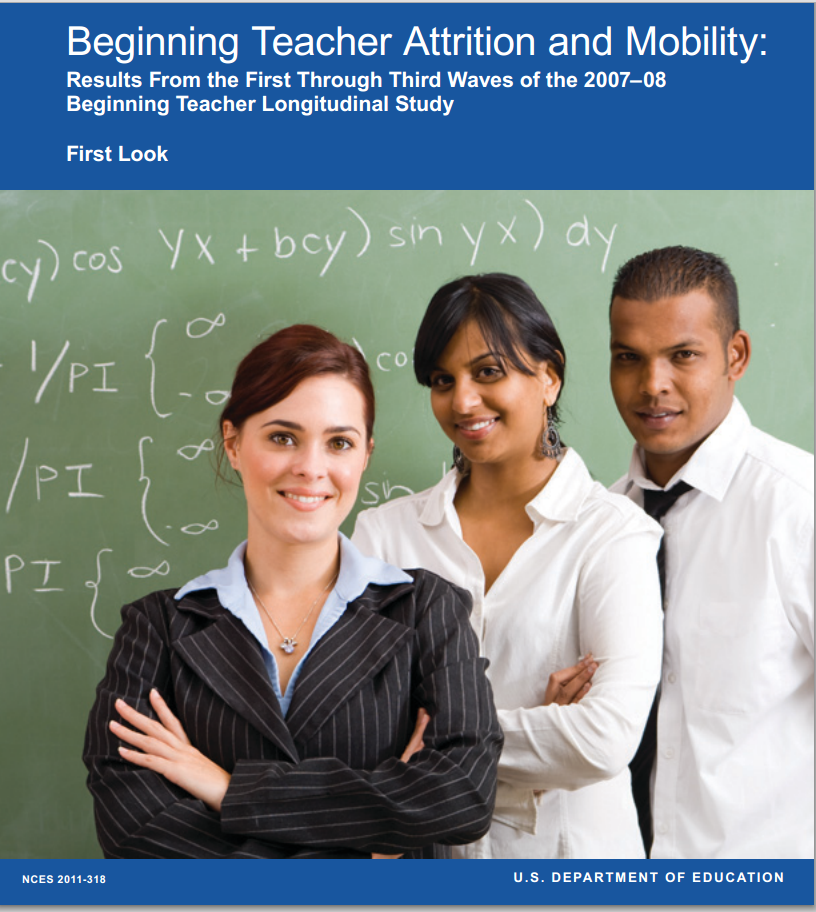Experience Matters in Teaching: One Big Reason Why We Should Treat Teachers Right
The previous post in this blog, "What is wrong with how we are teaching math?", underscores the importance of assessing what students need. Teaching is supposed to be a lifelong process of learning as well. It must be responsive. It is true that there are quite a few individuals who seem to have an inborn talent of connecting with students but for most of us, we need experience to improve our teaching. For this reason, it maybe useful to examine how teachers are introduced to the profession. It is likewise helpful to look at teacher turnover rates as this affects not only student learning but also undermines investments in both time and resources on the country's teaching force. The following is an example of such study:
 |
| To read the report, visit Beginning Teacher Attrition and Mobility |
Why is teacher retention important? There are so many reasons. It takes years to learn how to navigate a curriculum. It takes years to master lesson plans, techniques, and teaching resources. But one big reason is that it takes time for a teacher to actually know his or her students. It takes several years to get introduced to students who come with different backgrounds, attitude, likes, dislikes and temperament. Most "theories" about learning out there are actually quack science. (the use of the word "theories" here obviously do not correspond to its proper usage in science) A recent paper by Begeny and Greene in Psychology in the Schools illustrates an example:
 |
| Begeny, J. C. and Greene, D. J. (2014), CAN READABILITY FORMULAS BE USED TO SUCCESSFULLY GAUGE DIFFICULTY OF READING MATERIALS?. Psychol. Schs., 51: 198–215. doi: 10.1002/pits.21740 |
The Flesch-Kincaid Grade Level Readability FormulaWhat the authors found is that scales or equations like the one above do not really work. The above results highlight the importance of teachers being able to gauge by themselves where their students are and choose appropriately what their students should be reading. A lot of teaching is really learned inside a classroom, a concrete example of why experience matters....
Step 1: Calculate the average number of words used per sentence.
Step 2: Calculate the average number of syllables per word.
Step 3: Multiply the average number of words by 0.39 and add it to the average number of syllables per word multiplied by 11.8.
Step 4: Subtract 15.59 from the result.
The specific mathematical formula is:
FKRA = (0.39 x ASL) + (11.8 x ASW) - 15.59
Where,
FKRA = Flesch-Kincaid Reading Age
ASL = Average Sentence Length (i.e., the number of words divided by the number of sentences)
ASW = Average number of Syllable per Word (i.e., the number of syllables divided by the number of words)
Analyzing the results is a simple exercise. For instance, a score of 5.0 indicates a grade-school level; i.e., a score of 9.3 means that a ninth grader would be able to read the document. This score makes it easier for teachers, parents, librarians, and others to judge the readability level of various books and texts for the students.
Theoretically, the lowest grade level score could be -3.4, but since there are no real passages that have every sentence consisting of a one-syllable word, it is a highly improbable result in practice.
Comments
Post a Comment